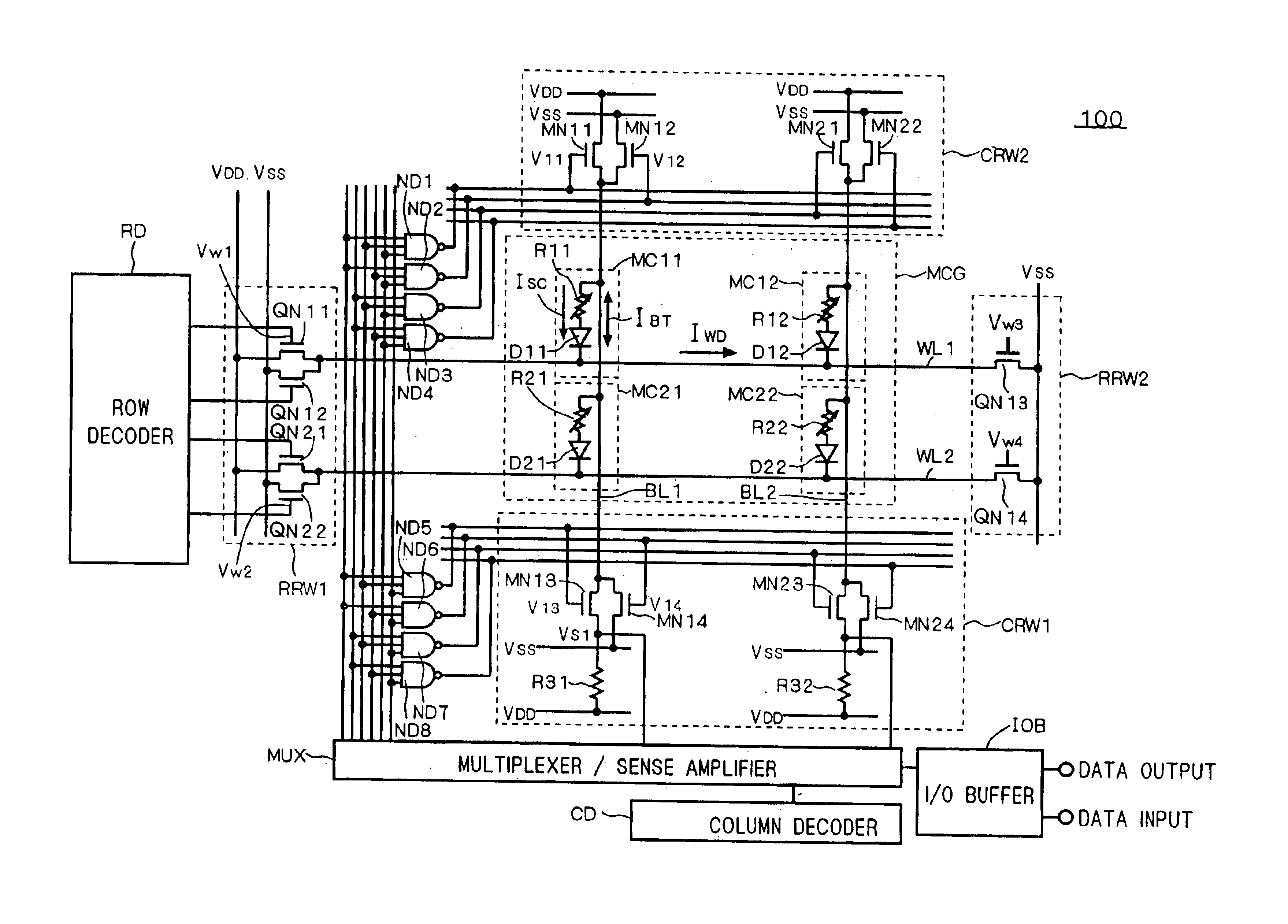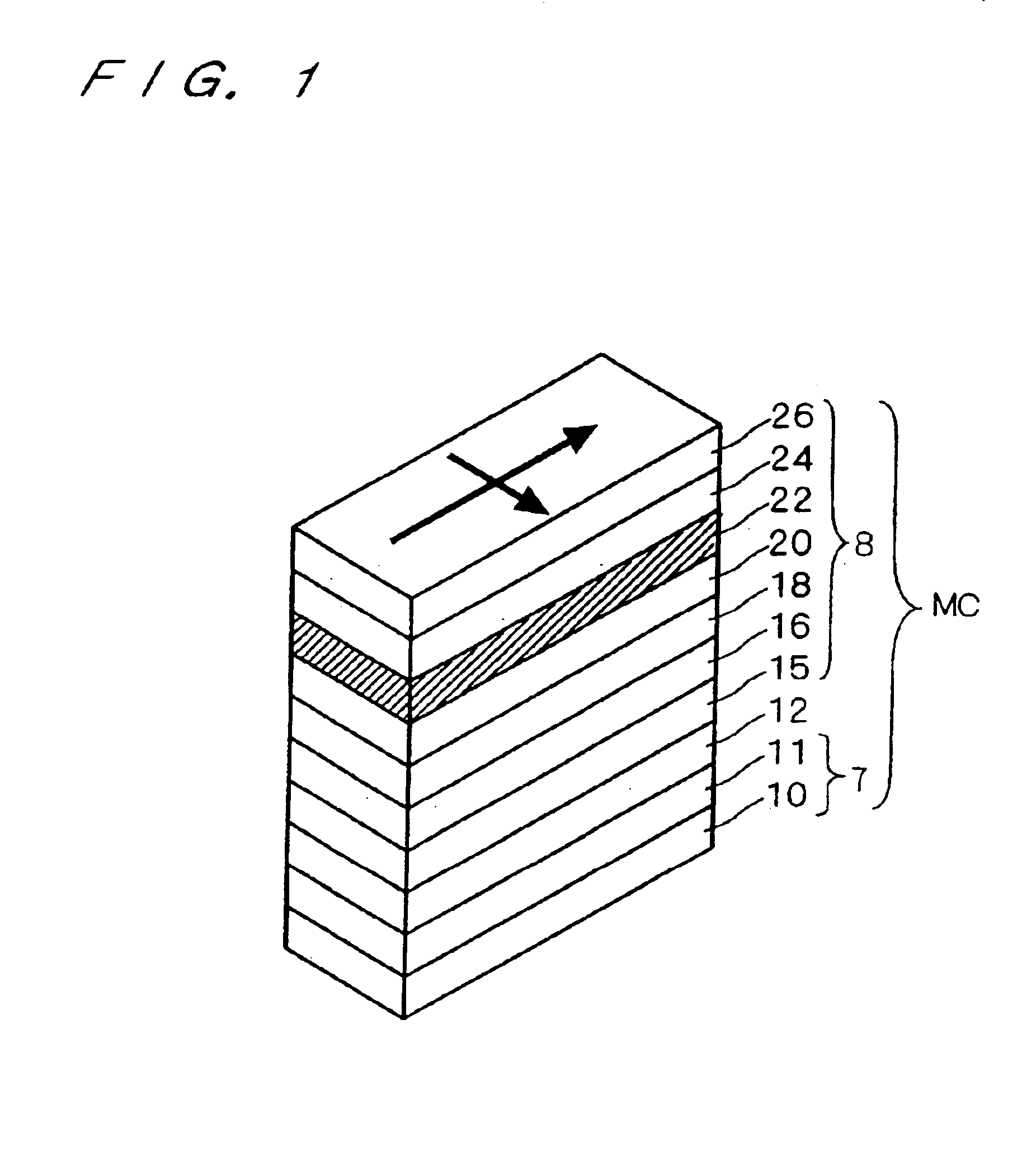Magnetic memory device capable of passing bidirectional currents through the bit lines
a memory device and bidirectional current technology, applied in nanoinformatics, instruments, substrates/intermediate layers, etc., can solve the problems of long time and disadvantageous power consumption in writing, and achieve the effect of reducing parasitic capacitance of mosfet, reducing manufacturing cost, and high operation speed of mos
- Summary
- Abstract
- Description
- Claims
- Application Information
AI Technical Summary
Benefits of technology
Problems solved by technology
Method used
Image
Examples
Embodiment Construction
[0200]
[0201]
[0202]An MRAM in accordance with the first preferred embodiment of the present invention is characteristically provided so that an easy axis of a soft ferromagnetic layer which is a constituent element of an MRAM cell may not be parallel to bit lines or word lines, and more specifically, may have an angle of 40 to 50 degrees with respect to the bit lines and the word lines.
[0203]
[0204]
[0205]First, a typical structure of an MRAM cell will be discussed, referring to FIG. 1. An MRAM cell MC shown in FIG. 1 has the pn-junction diode 7 constituted of the n+ silicon layer 10 and the p+ silicon layer 11 which are layered.
[0206]The tungsten stud 12 is formed above the pn-junction diode 7, and the pn-junction diode 7 is electrically connected to the magnetic tunnel junction (MTJ) 8 through the tungsten stud 12.
[0207]MTJ 8 has a layered structure consisting of the template layer 15 (having a film thickness of 10 nm) made of platinum (Pt), the initial ferromagnetic layer 16 (having...
PUM
 Login to View More
Login to View More Abstract
Description
Claims
Application Information
 Login to View More
Login to View More - R&D
- Intellectual Property
- Life Sciences
- Materials
- Tech Scout
- Unparalleled Data Quality
- Higher Quality Content
- 60% Fewer Hallucinations
Browse by: Latest US Patents, China's latest patents, Technical Efficacy Thesaurus, Application Domain, Technology Topic, Popular Technical Reports.
© 2025 PatSnap. All rights reserved.Legal|Privacy policy|Modern Slavery Act Transparency Statement|Sitemap|About US| Contact US: help@patsnap.com



